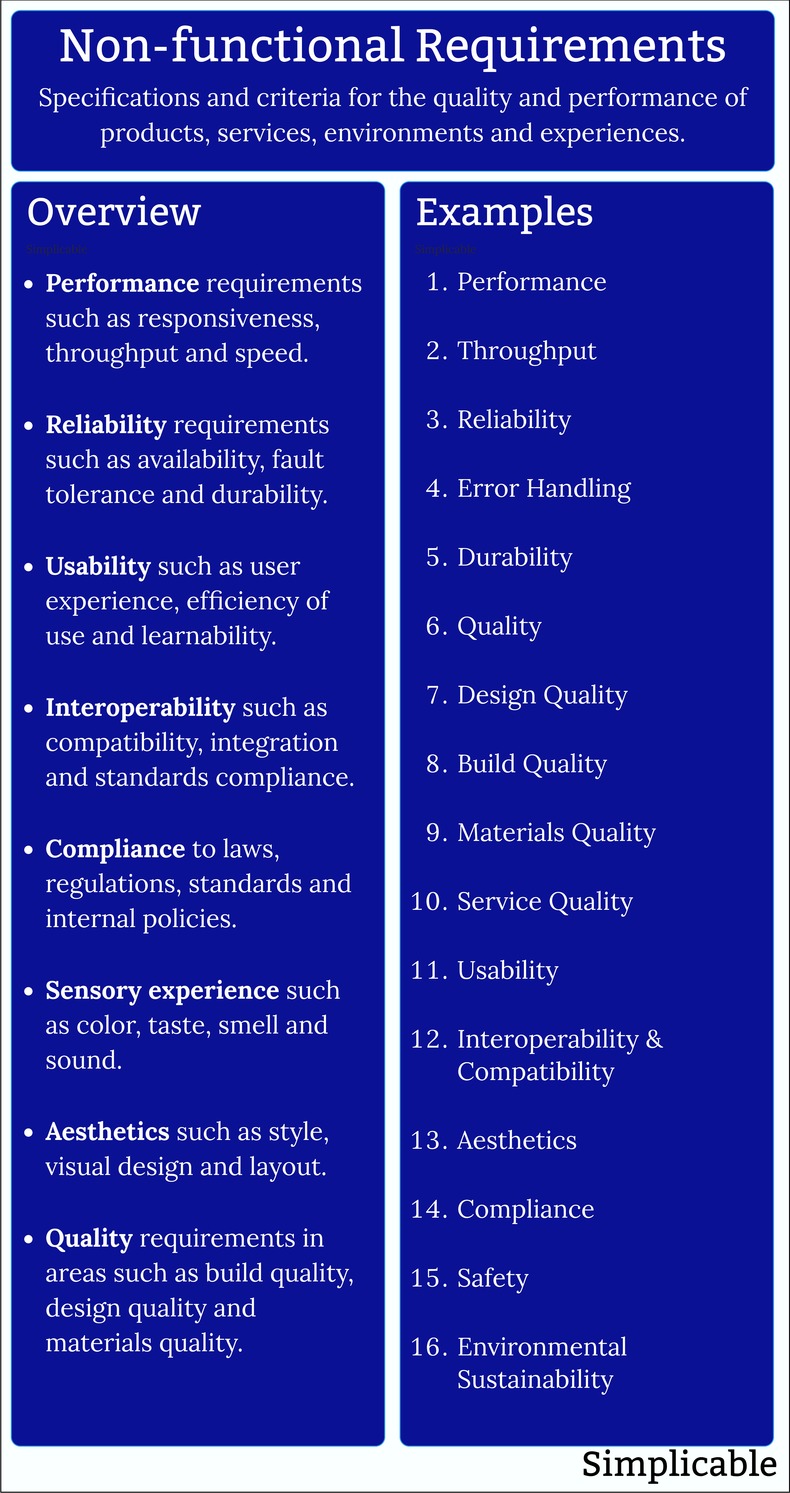Ambience
Customer requirements for a fireplace ask that it be modern, comfortable and distinctive.Availability
A hospital's patient record system is required to have 99.99% availability.Appearance
A breakfast cereal specifies that raisins have an attractive appearance such that they aren't crushed or discolored.Taste
A beverage company requires that a pineapple juice be produced from ripe fruit that have a sweet as opposed to sour or bitter taste.Reliability
An aircraft engine is required to have 100% reliability.Weight
A mobile device is required to be as light as possible given its functionality and constraints such as unit cost.Speed
A business unit requires that all pages on a website load in less than 2 seconds for 99% of customers considering their location, bandwidth and latency.Usability
Initial requirements for a vehicle navigation system state that all menus be easy to tap.Deconstructable
A bicycle manufacturer requires that all designs be easily deconstructable such that hobbyists can do self repairs and reuse parts.Human Factors
Job requirements state that applicants need to be "good with people."Visibility
High level marketing requirements specify that a new coffee product be highly visible on the shelves next to the product's primary competition.Human Error
Requirements for a furniture product state that customer assembly instructions need to be mistake proof.Security
Requirements for anything software related typically state that it be secure according to industry best practices.Design To The Edges
A design for a remote control unit for an air conditioner begins with the requirement that 99.99% of all customers find it easy to use regardless of their age, background or native language.Architecture
Architectural requirements for self-driving vehicle state that the software be designed according to a set of microservice principles.Sustainability
A solar panel company requires that at end of life all components be reusable and recyclable with minimal processing and energy expenditure.Maintainability
Requirements for an industrial robot state that monthly scheduled maintenance be less than 3 hours for the robot's first five years of service life.Summary
Non-functional requirements outline everything that you need from a product, service, environment or experience beyond its basic functionality. This includes broad areas such as quality, performance and usability.
| Overview: Non-Functional Requirements | ||
Type | ||
Related | ||






























